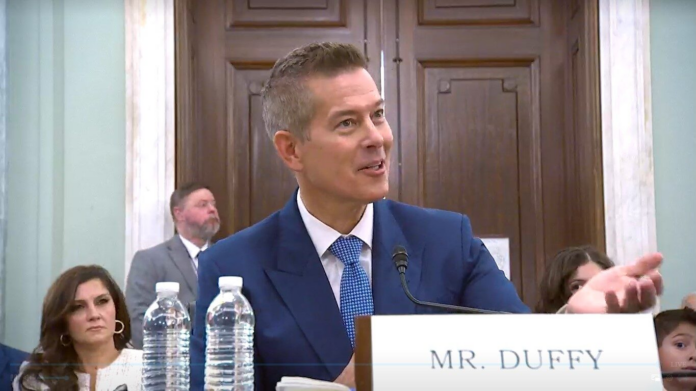Many non-domiciled CDL holders are individuals who might otherwise be homeless and are prepared to live in their trucks, as living conditions in their home countries are often far worse than those in a truck cab. A significant number of these drivers hail from Eastern Europe or the Indian subcontinent.
Trucking firms, frequently owned and operated by foreign individuals, have developed a compelling business model: import drivers from their home countries, pay them below-average wages, and have them operate nearly nonstop. While these working conditions are grueling for anyone, they are often preferable to conditions back home, with wages far exceeding what drivers could earn there. Additionally, since drivers live in their trucks, housing and personal transportation costs are eliminated. This model has proven highly effective.
While much of the trucking industry has endured its deepest downturn in history, these operators have exploited their willingness to flout regulations and employ labor under harsh conditions to undercut the pricing of American-owned competitors. Trucking profitability is largely driven by maximizing asset utilization and controlling variable costs, and this approach has allowed such firms to thrive.
The freight handled by these carriers often comes from brokers unconcerned with their practices. Though few would admit it, brokers have kept these carriers loaded because their rates are well below what American firms can offer for the same routes. Moreover, a solo driver willing to run nonstop on 1,000-mile hauls can provide service akin to a team operation.
Carriers Exploiting the Rules
Non-domiciled CDL holders have become integral to many trucking operations, especially those focused on maximizing miles while minimizing costs. Industry observers note that these drivers often work under different expectations than American drivers.
As Miranda from Trucking Made Successful (@TMSuccessful) explained on X: “Many carriers who hire primarily non-domiciled CDL holders have built a business model which can survive ONLY if drivers are ready to make up for the bad rates by running more miles in a shorter period of time (1000 miles in a day for example…hint hint, nudge nudge).”
This has distorted the market, with brokers expecting unrealistic delivery timelines. The same source highlights brokers “EXPECTING you to do a 800-900 mile run in a day,” sometimes even advancing delivery dates to match these expectations.
Federal Crackdown
Addressing safety and compliance issues, the U.S. Department of Transportation (DOT) issued an emergency order mandating that states cease issuing or renewing limited-term legal presence CDLs and commercial learner’s permits until new federal standards take effect.
Secretary Duffy was blunt about the findings: “What our team has discovered should disturb and anger every American. Licenses to operate a massive, 80,000-pound truck are being issued to dangerous foreign drivers — oftentimes illegally. This is a direct threat to the safety of every family on the road, and I won’t stand for it.”
States including California, Oregon, Colorado, Pennsylvania, South Dakota, Texas, and Washington have already suspended non-domiciled CDL issuances in compliance. The action follows a Federal Motor Carrier Safety Administration (FMCSA) audit revealing that over 25% of California’s non-domiciled CDLs were improperly issued, including extensions years beyond drivers’ lawful U.S. presence.
The rule provides a two-year grace period before existing non-domiciled CDLs lose privileges, but it will eventually curb the growth of these operators, especially as English proficiency requirements and other rules take hold. By halting new issuances, the pipeline of such drivers will dry up.
Operational Challenges and Bankruptcy Risks
This regulatory shift poses existential threats to many carriers, particularly small and mid-sized ones reliant on this labor pool. Analysts predict a surge in bankruptcies as companies confront operations without their traditional workforce.
Many firms built models unsustainable under full regulatory compliance. Miranda from Trucking Made Successful added: “For a lack of a better word, some carriers are not built to survive if they have to follow the law…and that is a HUGE problem.” She concluded: “If you build your company on quicksand, there is only one thing you can be sure of: one day, it will crumble.”
Economic Factors
Economic pressures have fueled these practices. Operating costs for truckers have risen over 40% per mile in the past five years, while rates have dropped nearly $0.30 per mile. This squeeze has pushed operators toward alternative solutions.
Many runs are now at a loss. To survive, mid-sized carriers hired these drivers, enabled by government oversight that allowed CDLs based on foreign licenses without U.S. testing or work permits.
Safety and Market Implications
The crackdown underscores safety concerns and market inequities. American truckers adhering to HOS rules—limited to 11 driving hours—typically max out at 500 miles daily. This disadvantages them against non-compliant competitors.
Non-domiciled holders often ignore HOS, running nonstop. These rules exist for safety, yet they’ve handicapped rule-abiding American truckers who value their careers and avoid violations.
If successful, this enforcement could end the Great Freight Recession by reducing excess capacity from illegal operators, restoring rule of law and improving market conditions regardless of demand.


